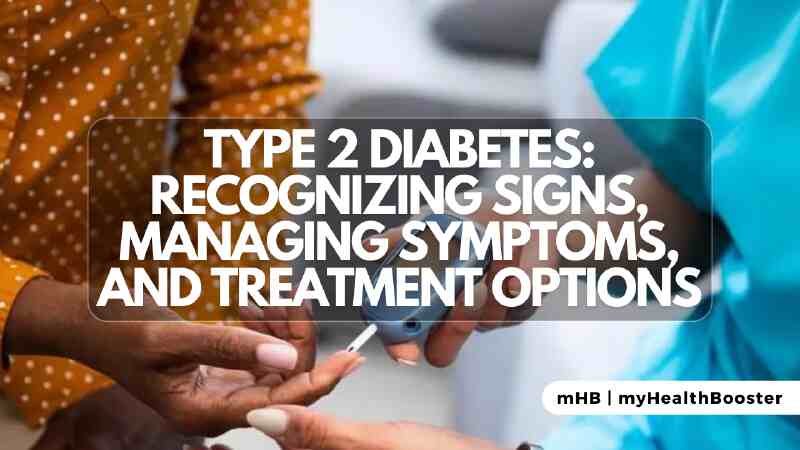Type 2 diabetes is a condition that can affect individuals of any age, with early symptoms often going unnoticed. Shockingly, about one-third of those in the early stages of type 2 diabetes are unaware of their condition, emphasizing the importance of awareness and understanding. This article aims to shed light on the signs, symptoms, risk factors, and treatments associated with type 2 diabetes.
Signs and Symptoms
Type 2 diabetes disrupts the body’s ability to metabolize carbohydrates, leading to elevated blood sugar levels and increasing the risk of severe health problems. While symptoms may vary, common indicators include increased thirst, frequent urination, unusual hunger, dry mouth, and fluctuations in weight. Additional symptoms encompass headaches, fatigue, blurred vision, and prolonged healing time for infections and sores.
Sexual Dysfunction
Sexual problems can arise due to type 2 diabetes, affecting both men and women. The condition can damage blood vessels and nerves in the sex organs, leading to decreased sensation and potential difficulties with orgasm. Estimates indicate that a significant percentage of individuals with diabetes may experience sexual dysfunction, emphasizing the need for comprehensive healthcare.
Risk Factors
Certain lifestyle choices and medical conditions can heighten the risk of developing type 2 diabetes. Smoking, obesity, lack of exercise, and a diet high in processed meat, fats, and sweets are modifiable risk factors. Additionally, elevated triglyceride levels, low levels of “good” HDL cholesterol, ethnicity, family history, age over 45, and specific conditions like gestational diabetes or polycystic ovary syndrome contribute to the risk.
Insulin and Insulin Resistance
Insulin, a crucial hormone, facilitates the body’s utilization of glucose for energy. In type 2 diabetes, cells struggle to respond properly to insulin, leading to high blood sugar levels. This insulin resistance prompts the pancreas to reduce insulin production over time, exacerbating the condition.
Diagnosis
Diagnostic tests for type 2 diabetes include the hemoglobin A1c test and fasting blood glucose test. Elevated hemoglobin A1c levels above 6.5% suggest diabetes, while fasting blood glucose levels exceeding 126 confirm its presence. Regular monitoring and accurate diagnosis are essential for effective management.
Managing Type 2 Diabetes
Controlling blood sugar levels through diet and exercise is crucial in managing type 2 diabetes. A balanced diet, monitored carbohydrate intake, and calorie reduction may be necessary. Regular physical activity, such as 30 minutes of moderate exercise most days, helps lower blood glucose levels, reduce body fat, and prevent cardiovascular complications.
Stress Management
Stress poses additional challenges for individuals with diabetes, contributing to increased blood pressure and glucose levels. Relaxation techniques, such as visualization, meditation, and breathing exercises, can be effective. Seeking support from friends, family, or professionals can further aid in stress management.
Medications and Treatments
Oral medications are recommended when diet and exercise alone cannot control blood sugar levels. These medications, available in various types, may increase insulin production, improve insulin utilization, or partially block starch digestion. Insulin injections or non-insulin injectable drugs may be necessary for some individuals, especially in cases of beta-cell failure.
Monitoring and Complications
Regular blood glucose testing at different times of the day is vital for monitoring diabetes control. Individuals with diabetes face an increased risk of heart disease, kidney problems, eye damage, nerve pain, and foot damage. Timely intervention, medication, and lifestyle modifications can mitigate these risks and improve overall well-being.
Prevention
Type 2 diabetes is preventable and manageable through healthy lifestyle choices, including a balanced diet, regular exercise, and weight maintenance. Screening for diabetes and prediabetes in at-risk populations allows for early intervention, reducing the risk of long-term complications.
Summary
Understanding type 2 diabetes is pivotal in promoting early detection, effective management, and prevention of complications. By recognizing signs, addressing risk factors, and adopting a proactive approach to healthcare, individuals can lead healthier lives despite this chronic condition. For additional information, resources from reputable organizations such as the American Diabetes Association, Diabetes Research Institute Foundation, and the National Institute of Diabetes and Digestive and Kidney Diseases are invaluable.
References
- Medscape: “Type 2 Diabetes Mellitus“
- New York State Department of Health: “The Importance of Controlling Blood Sugar“
- PubMed Health: “Type 2 Diabetes: Overview“
